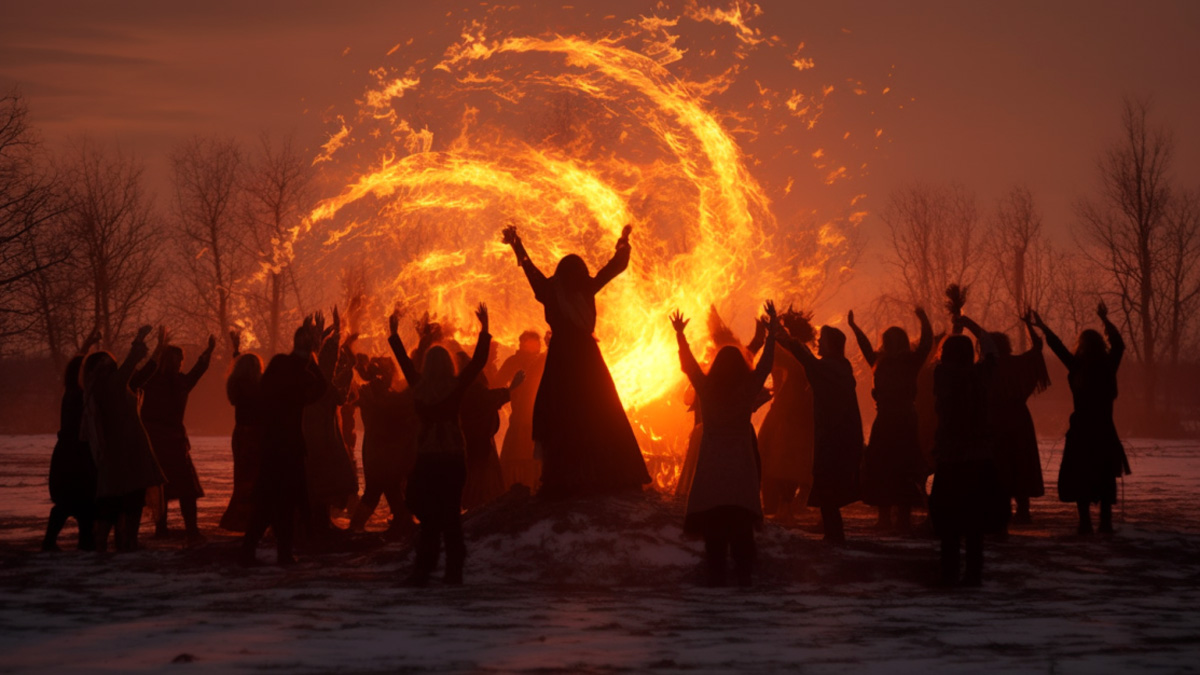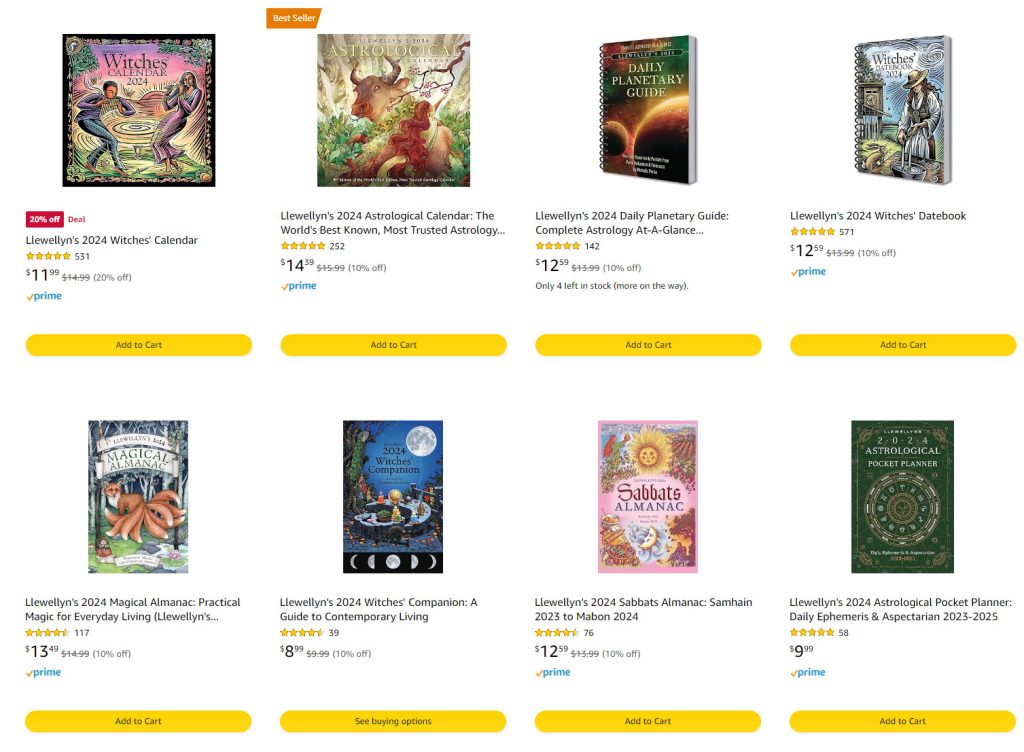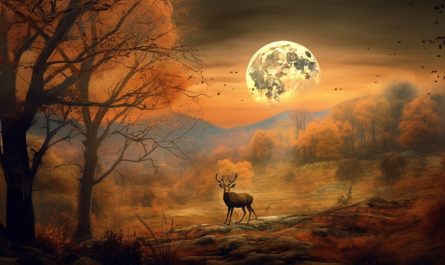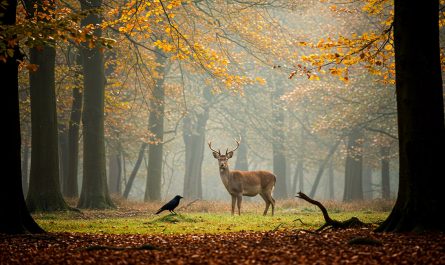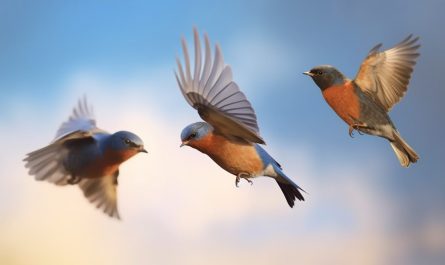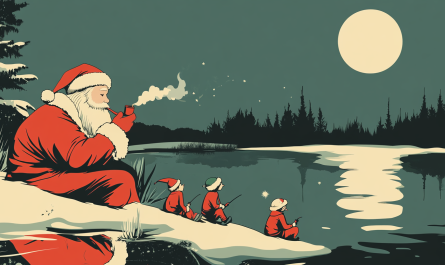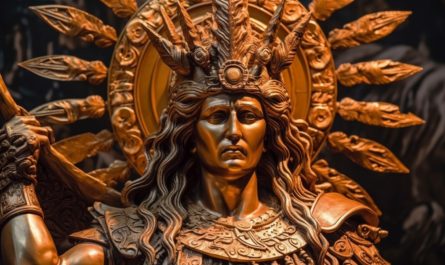Last Updated on May 22, 2025 by Avia
Step back in time and immerse yourself in the enchanting world of pre-industrial celebrations. Picture vibrant festivals, mystical traditions, and a deep connection to nature’s rhythms. Welcome to the Wheel of the Year holidays – a sacred cycle that guides us through the changing seasons with ancient wisdom and meaningful rituals. From Samhain to Mabon, each festival carries its unique energy and symbolism, providing an opportunity for personal growth and spiritual exploration.
If you’re curious about embracing these old-school celebrations or looking for new ways to infuse magic into your life, join me on this journey as we unravel the secrets of the Wheel of the Year holidays and celebrations. Let’s dive deep into its meaning, discover how our ancestors honored these occasions, and explore creative ideas on how you can celebrate them today!
Table of Contents
- What is the Wheel of the Year?
- A Word About the Word “Pagan” or “Paganism”
- Why Pre-Industrial (Pagan) Holidays Matter
- Wheel of the Year Dates
- A Celebration of Seasons: Holidays of the Wheel of the Year
- Why Practice the Old Ways and Celebrate the Wheel of the Year?
- Frequently Asked Questions About Holidays in the Wheel of the Year
- Conclusion About Pre-Industrial (Pagan) Wheel of the Year Holidays
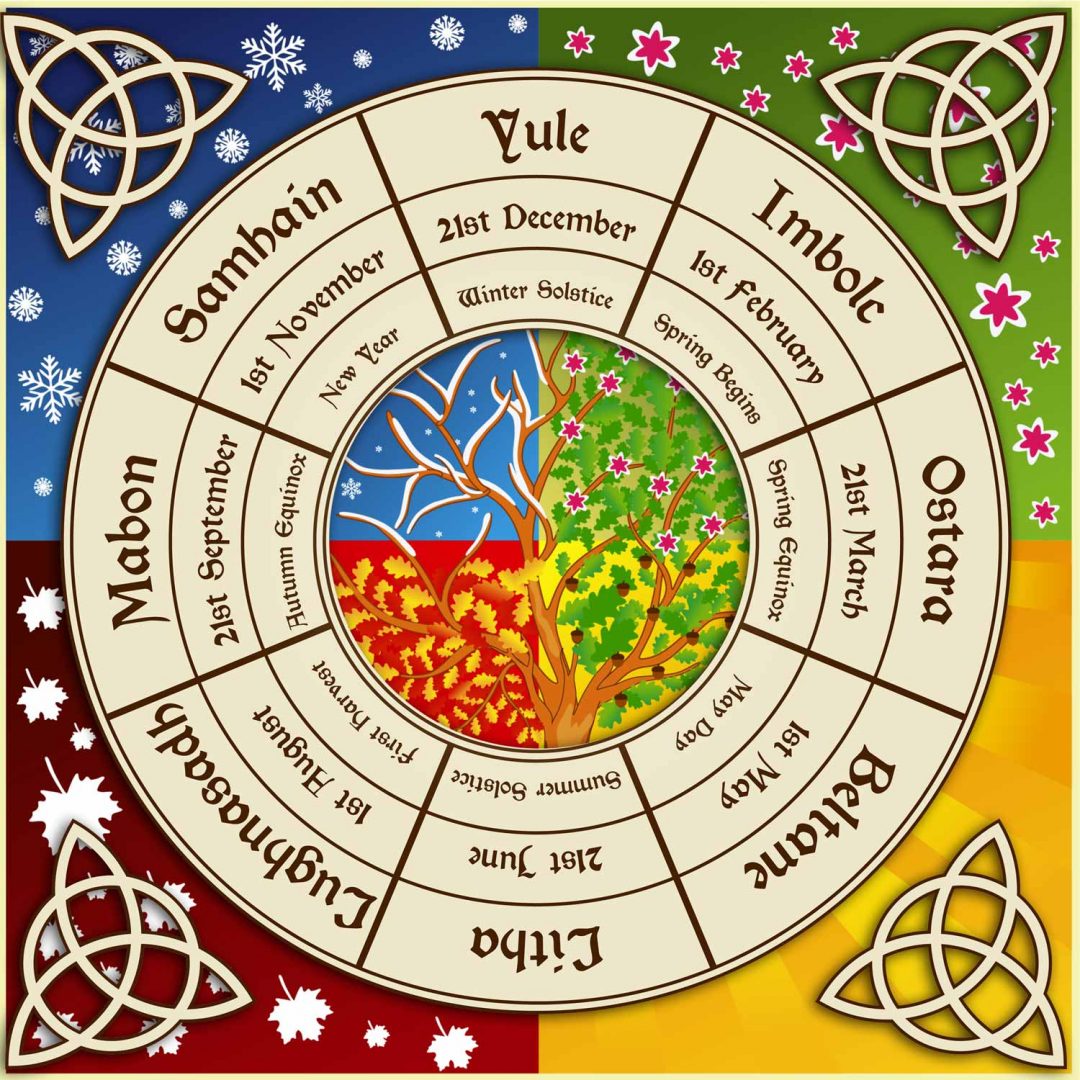
What is the Wheel of the Year?
The Wheel of the Year is a concept that dates back centuries and holds great significance in various pagan traditions. It is a cyclical, pre-industrial calendar that marks the changing seasons, celebrating the interconnectedness of nature and our place within it.
At its core, the Wheel of the Year acknowledges the ever-changing cycles in nature and life. It consists of eight major holidays or Sabbats, spaced evenly throughout the year. Each festival corresponds to a specific season or agricultural milestone.
These celebrations offer an opportunity to connect with nature, honor ancestral wisdom, and tap into ancient practices that have been passed down through generations. They provide a chance to pause and reflect on our own journeys as we align ourselves with natural rhythms.
While some may view these festivities as solely religious or spiritual in nature, they can also be seen as cultural celebrations that foster community connection and appreciation for the world around us.
Whether you identify as Pagan, Wiccan, or simply have an interest in exploring different ways of connecting with nature, understanding the Wheel of the Year can provide valuable insights into ancient belief systems and offer inspiration for modern-day rituals.
Each holiday carries unique symbolism and energy, from Samhain’s celebration of death and rebirth to Beltane’s honoring fertility and abundance. By embracing these festivals, we are invited to participate in age-old traditions that highlight our deep-rooted ties to Earth.
By engaging with these pre-industrial holidays throughout the year – whether through solitary rituals or communal gatherings – we can cultivate a deeper sense of connectedness while honoring both our personal journey and humanity’s collective history.
So let’s discover your own way to celebrate each turn on this sacred wheel – find joy in simple rituals like lighting candles on Yule or planting seeds during Ostara. Embrace your inner creativity by crafting an altar adorned with seasonal symbols or preparing feasts using locally sourced ingredients during Lughnasadh.
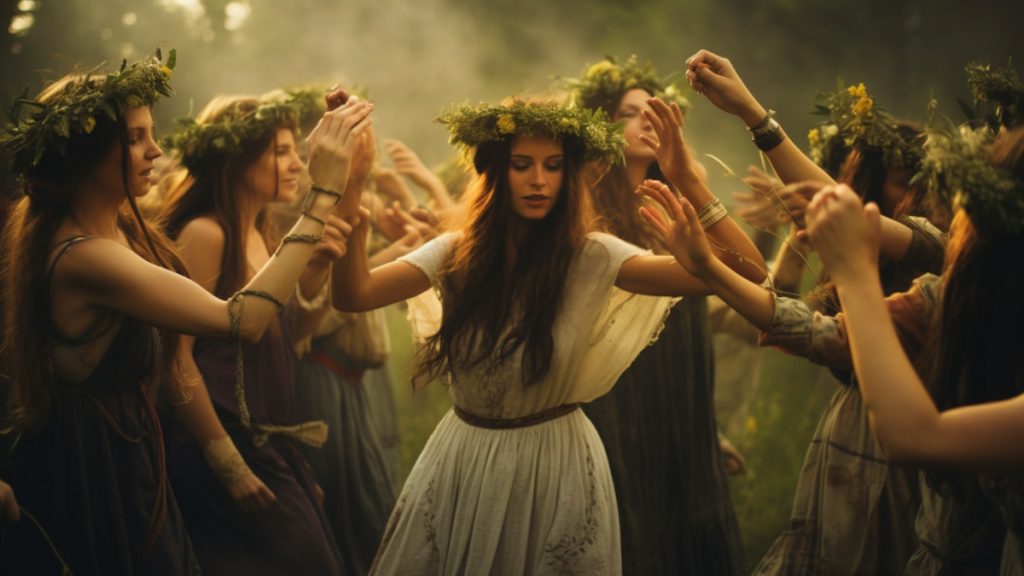
A Word About the Word “Pagan” or “Paganism”
The word “pagan” often evokes a sense of mystery and intrigue. But what does it really mean? In mass media, the term “pagan” gets a bad rap, if you ask me. The word often conjures images of heathens or godless folks. This is emphatically not true. The word itself merely means “country folk,” and as country-centric people, pagans were/are more bound to natural rhythms and cycles than most any other spiritual group.
Paganism is a term used to describe various nature-based spiritual traditions that existed before the rise of organized religions. It encompasses a diverse and dynamic range of practices and beliefs, honoring multiple deities and focusing on the interconnectedness of all living beings.
In ancient times, paganism was not seen as something negative or evil. It simply represented an alternative way of understanding and relating to the world. Pagans revered natural forces, celebrated seasonal cycles, and found meaning in birth, growth, death, and rebirth cycles.
Today, pagan traditions are experiencing a resurgence as people seek to reconnect with nature and reclaim their ancestral roots. Many find solace in following the Wheel of the Year – a cyclical calendar that marks eight major Wheel of the Year holidays.
By embracing pagan holidays and festivities, individuals can deepen their connection to nature’s rhythms while also finding personal meaning in ancient rituals passed down through generations.
As we explore these pre-industrial celebrations further in this article, let us remember that paganism is not just about worshiping gods or goddesses; it’s about fostering reverence for our earth-home and cultivating harmony with all living things around us. So let’s dive into the rich tapestry of pagan holidays!
Why Pre-Industrial (Pagan) Holidays Matter
The celebration of pre-industrial (pagan) holidays holds a special significance in today’s fast-paced and technology-driven world. These ancient traditions remind us of our deep connection to nature, the cycles of the seasons, and the importance of honoring and respecting the Earth.
In a time when many people feel disconnected from the natural world, these holidays serve as powerful reminders to slow down, take stock of our surroundings, and appreciate the beauty that surrounds us. They provide an opportunity to pause and reflect on our place within this vast universe.
Pre-industrial holidays also offer a chance for community bonding. In earlier times, these celebrations brought people together to mark important moments in their lives – from harvest festivals to solstice ceremonies. Today, they can still serve as occasions for gathering with loved ones or joining like-minded individuals who share similar beliefs.
Moreover, participating in these ancient rituals allows us to tap into something primal within ourselves. It connects us with our ancestors who lived close to nature and celebrated these same festivities centuries ago. By engaging with pre-industrial holidays, we honor those who came before us while nurturing a sense of continuity between generations.
Embracing pagan holidays is about finding balance in an increasingly imbalanced world. It is about reconnecting with nature’s rhythms and rediscovering our own inner harmony. So whether you choose to celebrate Samhain or Beltane or any other festival on the Wheel of Year calendar – embrace it fully! Let yourself be immersed in its magic, and let it remind you why pre-industrial celebrations truly matter.
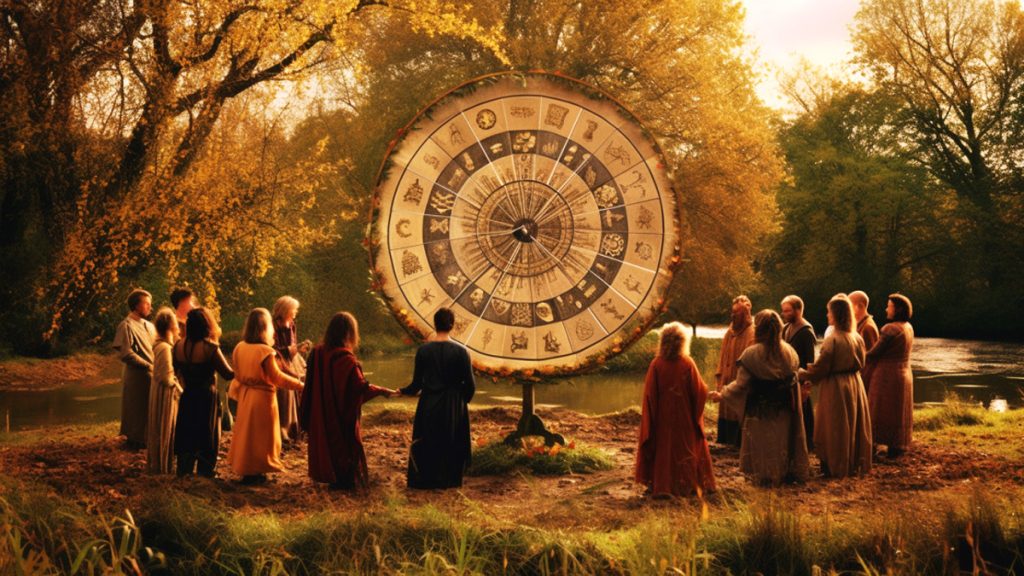
Wheel of the Year Dates
| Celebration | Time of Year | Corresponding Seasons & Holidays |
| Samhain | October 31st | Halloween |
| Yule | December 20-25th | Christmas – Winter Solstice |
| Imbolc | February 1-2nd | Candlemas – Early Spring |
| Ostara | March 20-23rd | Easter – Vernal (Spring) Equinox |
| Beltane | April 30 – May 1st | May Day – Return of Light- 1st Summer’s Day |
| Litha | June 20-22nd | Summer Solstice |
| Lughnasadh | August 1st | Lammas – Feast of First Harvest |
| Mabon | September 20-23rd | Autumnal Equinox – Feast of Second Harvest |
A Celebration of Seasons: Holidays of the Wheel of the Year
The Wheel of the Year is a cyclical calendar that celebrates the changing seasons and their corresponding holidays. It honors ancient traditions passed down through generations, reminding us to connect with nature and embrace its rhythms. Here are the eight different Wheel of the Year holidays and some ideas on how to celebrate each one.
About Samhain
Samhain, also known as Halloween, is one of the most widely recognized holidays in the Wheel of the Year. It falls on October 31st and marks the end of harvest season and the beginning of winter. The word “Samhain” itself means “summer’s end,” reflecting its significance as a time when nature transitions from vibrant abundance to stillness.
Traditionally, Samhain was celebrated by ancient Celtic cultures who believed that during this time, the veil between our world and the spirit realm was at its thinnest. It was a time to honor ancestors, communicate with spirits, and seek guidance for the coming year.
Today, many people continue to celebrate Samhain as a way to honor their loved ones who have passed away. It is a time for reflection and remembrance, where we can connect with those who came before us.
Overall, Samhain offers an opportunity for a deep connection with both ourselves and our roots. It invites us to embrace change, acknowledge death, and, ultimately, celebrate life. This ancient holiday has endured throughout centuries because it speaks directly to our primal instincts, to honor, the cycle of life, and our eternal connection with nature
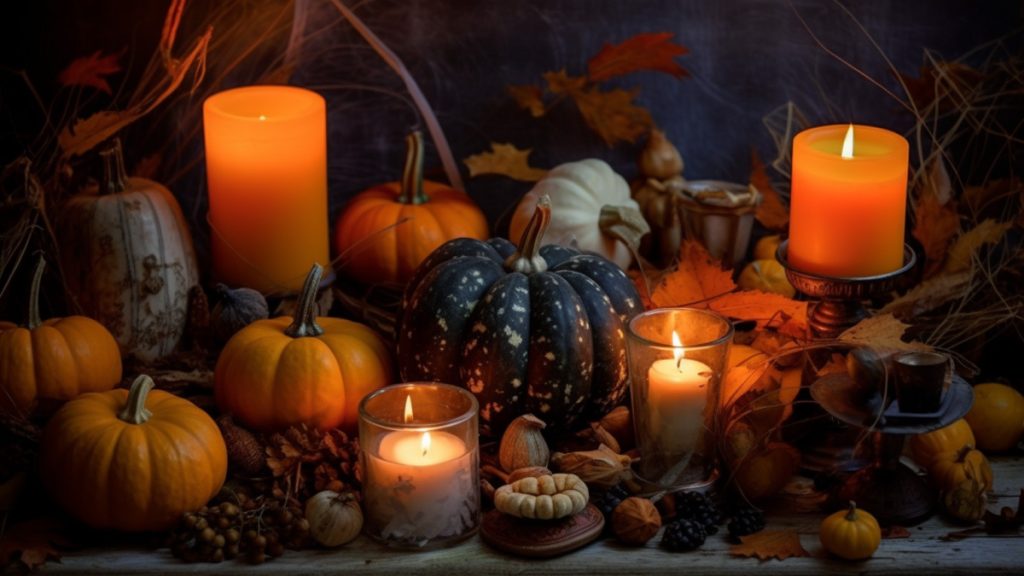
Ideas to Celebrate Samhain
1. Create an Ancestor Altar: Set up a special space in your home dedicated to honoring your ancestors. Decorate it with photos, mementos, and candles. Take time to reflect on their lives and the wisdom they passed down.
2. Hold a Dumb Supper: Host a dinner where you invite departed loved ones to join you at the table. Serve their favorite dishes and set places for them. Light candles in their honor and share stories or memories of them throughout the meal.
3. Explore Divination: Samhain is believed to be a time when the veil between worlds is thin, making it an ideal time for divination rituals such as tarot card readings or scrying with crystals or mirrors.
4. Craft Protective Talismans: Use natural materials like acorns, leaves, or feathers to create talismans that symbolize protection and good luck during the winter months ahead.
5. Carve Pumpkins: Embrace this popular Halloween tradition by carving pumpkins with intricate designs or symbols that hold personal meaning for you.
6. Attend Community Gatherings: Check for any local events around Samhain where you can connect with like-minded individuals who celebrate this holiday too.
Remember, these are just suggestions – feel free to adapt them based on your own beliefs and interests! Samhain is a time for reflection, remembrance, and honoring our connection to both past generations and nature’s cycles of life and death
About Yule
Yule, also known as the Winter Solstice, is a festive celebration that marks the shortest day and longest night of the year. It falls around December 20-25th in the Northern Hemisphere. This ancient Pagan holiday holds deep significance for many cultures across history.
During Yule, we honor the return of light as we witness nature’s rebirth from darkness. The word “Yule” derives from Old Norse and means “wheel,” symbolizing the turning point of winter towards spring. It represents hope and renewal.
Take time during this period for introspection and reflection on personal growth throughout the year while setting intentions for what lies ahead. Yule is a joyous occasion where we come together in gratitude for nature’s cycles and embrace the promise of brighter days ahead.
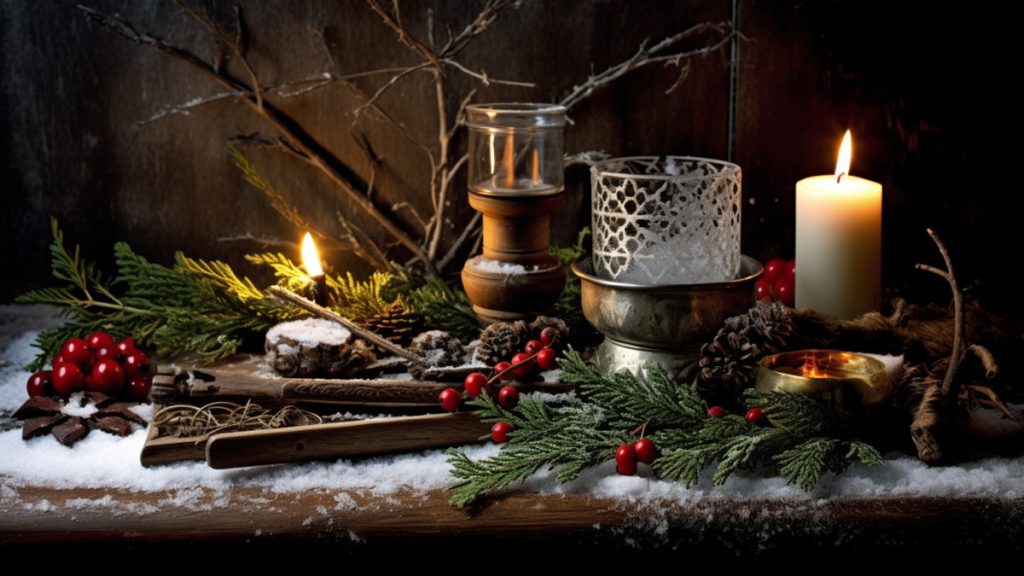
Ideas on How to Celebrate Yule
Yule, also known as the Winter Solstice, is a magical time of year when we celebrate the return of light and warmth. Here are some ideas on how to honor this ancient pagan holiday:
1. Light up your home: Decorate your space with twinkling lights, candles, and a Yule log. The warm glow will create a cozy atmosphere and remind you of the returning sun.
2. Create a Yule altar: Set up a sacred space dedicated to the solstice in your home. Adorn it with symbols of rebirth such as evergreen branches, holly berries, and mistletoe.
3. Have a feast: Gather friends and family for a festive meal filled with seasonal foods like roasted vegetables, spiced cider, and hearty stews. Remember to express gratitude for the abundance of nature’s gifts.
4. Give back: As this is commonly viewed as a season of giving, consider donating to local charities or volunteering at community events. Spread love and kindness by helping those in need.
5. Practice divination: Use this auspicious time to connect with your intuition and seek guidance for the coming year through tarot cards or other forms of divination.
6. Celebrate outdoors: Bundle up and spend time in nature during daylight hours if weather permits! Take mindful walks through snow-covered landscapes or have an outdoor bonfire ceremony under starlit skies.
All About Imbolc
Imbolc, also known as Candlemas, is a pagan festival celebrated on February 1st – 2nd. It denotes the halfway mark between the winter solstice and the spring equinox. Imbolc holds deep significance for those who follow the Wheel of the Year holidays.
Imbolc honors Brigid, a Celtic goddess associated with healing, poetry, and fire. It symbolizes new beginnings and rebirth as we emerge from the darkness of winter into the promise of spring. The name “Imbolc” itself comes from an Irish word meaning “in the belly,” representing pregnant ewes preparing to give birth during this time.
By embracing customs associated with Imbolc, you tap into ancient wisdom passed down through generations while connecting more deeply with nature’s rhythms. Whether you follow pagan traditions or simply appreciate celebrating each season’s unique qualities—Imbolc invites us all to embrace hope and transformation as we welcome spring’s arrival!
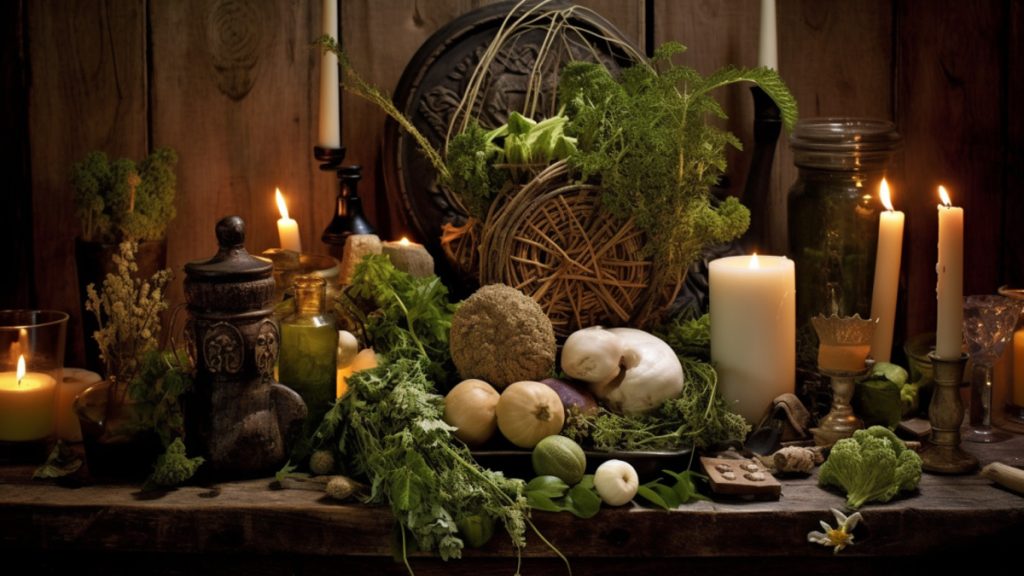
Tips on Celebrating Imbolc
1. Embrace the Fire: Imbolc is often associated with fire, so why not incorporate it into your celebrations? Light a bonfire or candles to represent the returning warmth and light of the sun.
2. Spring Cleaning Ritual: Use this time to declutter and cleanse your living space. As you clean, visualize releasing stagnant energy and making way for new beginnings.
3. Create an Altar: Set up a special altar dedicated to Imbolc. Decorate it with symbols of fertility and growth, such as flowers, seeds, or images of Brigid – the goddess associated with this holiday.
4. Make Corn Dolls: In Celtic traditions, corn dolls were made during Imbolc as a symbol of abundance for the coming year. Get creative by crafting your own corn doll using materials like straw or dried corn husks.
5. Plant Seeds: Take advantage of this seasonal shift by starting some early spring planting indoors. Choose herbs or flowers that have significance to you personally or are traditionally associated with Imbolc.
6. Share a Feast: Invite friends and family for a feast inspired by foods representing rebirth and potential growth, such as fresh vegetables and dairy products.
About Ostara
Ostara is a joyous celebration of the spring equinox, which marks the official arrival of spring (around March 20-23rd). It is a time to honor the rebirth and renewal that comes with this season of growth and transformation. The name “Ostara” originates from Germanic pagan traditions and is named after the goddess Eostre, who represents fertility, new beginnings, and the awakening of nature.
During Ostara, we embrace the energy of longer days and warmer weather as we bid farewell to winter’s cold grasp. This festival reminds us to appreciate the beauty in nature’s awakening around us – blooming flowers, buzzing bees, and vibrant greenery.
Remember that Ostara is not just about external celebrations; it also invites introspection into personal growth. Reflect on areas where you would like to experience change or renewal in your life. Set intentions for what you hope to manifest throughout this season of rejuvenation.
So go ahead! Embrace Ostara’s vitality by immersing yourself in its essence—a truly magical time when everything feels alive once again!
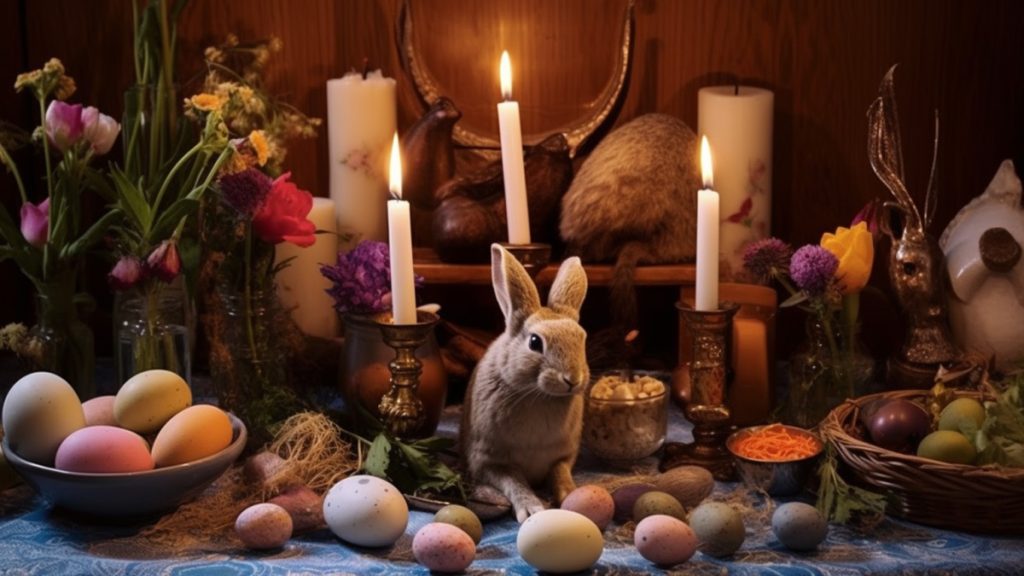
Ways to Celebrate Ostara
To celebrate Ostara, you can engage in various activities that connect you with nature’s resurgence, and here are a few ideas:
1. Embrace the Renewal of Spring: As Ostara marks the arrival of spring, take this time to connect with nature and witness its awakening. Spend a day outdoors, surrounded by blooming flowers and budding trees. Take a walk in the park or visit a botanical garden to fully immerse yourself in the beauty of this season.
2. Create an Altar for Ostara: Set up a special altar dedicated to celebrating Ostara. Decorate it with symbols of fertility and growth, such as fresh flowers, colorful eggs, and seeds. Light candles in vibrant spring colors like yellow, green, and pink to enhance the joyful atmosphere.
3. Engage in Egg Decorating: In many pagan traditions, eggs represent new life and are commonly associated with Ostara celebrations. Gather friends or family members for an egg decorating party where you can dye or paint eggs together. Get creative with intricate patterns or meaningful symbols that hold personal significance.
4. Plant Seeds for the Future: Use this time of rebirth and renewal to start your own garden! Whether you have access to outdoor space or simply want to create a small indoor herb garden, planting seeds is a wonderful way to honor Ostara’s energy of growth and abundance.
5. Savor Seasonal Foods: Prepare meals using seasonal ingredients like fresh greens, sprouts, berries, and early root vegetables which symbolize vitality during this time of year.
The most important aspect is embracing the spirit behind each celebration while expressing gratitude for nature’s ever-changing cycles
All About Beltane
Beltane, also known as May Day, is a joyful celebration that takes place April 30 – May 1st. It’s a time when nature bursts into vibrant life and fertility fills the air. Among the ancient Wheel of the Year holidays, Beltane is all about honoring the sacred union between the Earth and the Sun.
During Beltane, people traditionally lit bonfires to symbolize purification and protection for the coming season. These fires were believed to have healing properties and could ward off evil spirits. It was common for couples to jump over these flames together, solidifying their commitment in front of their community.
Another important aspect of Beltane is the weaving of flower crowns and garlands. These beautiful creations honor nature’s abundance and serve as symbols of fertility and growth. People would wear these adornments while dancing around maypoles – tall wooden poles decorated with ribbons – in lively celebrations filled with laughter and music.
Today, you can celebrate Beltane by spending time outdoors, connecting with nature’s energy. Take a walk in a blooming garden or forest, feeling the warmth of the sun on your skin. Create your own flower crown using fresh blooms from your garden or local florist.
Let this joyous occasion be an opportunity for you to embrace renewal in every aspect of your life – whether it’s planting seeds for future goals or nurturing existing relationships. Use this time to set intentions for growth and abundance throughout the upcoming months.
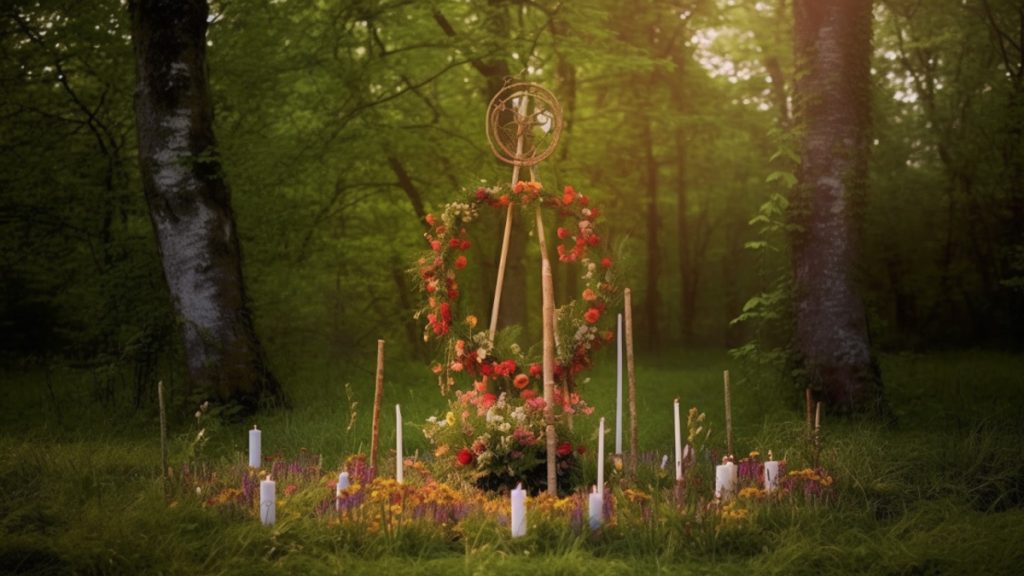
Tips to Celebrate Beltane
1. Embrace the Outdoors: Beltane is all about celebrating the arrival of summer, so what better way to honor this season than by spending time in nature? Take a walk in a nearby park or forest, feel the warmth of the sunshine soothing your skin, and heartily suck in the fresh air. Connect with Mother Earth and appreciate her bountiful beauty.
2. Light Up Your Life: Fire is important during Beltane celebrations, symbolizing transformation and purification. Build a bonfire or light candles in your home or backyard to bring warmth and energy into your space. You can also create a traditional Maypole adorned with ribbons and dance around it, weaving together joy and unity.
3. Honor Fertility: Beltane is associated with fertility rituals, so take this opportunity to connect with your own creative energy. Plant flowers or herbs in your garden, nurture them throughout the summer months and watch as they bloom beautifully – just like your own dreams and aspirations.
4. Celebrate Love: This holiday is often seen as a celebration of love and romance. Spend quality time with your partner by having a picnic outdoors or planning a special date night under the stars. Show appreciation for each other’s presence in your lives and kindle the flame of passion within your relationship.
5. Create Handmade Crafts: Get crafty this Beltane by making floral wreaths or crowns using fresh flowers from around you – it’s fun and connects you with nature’s vibrant colors! You can also try painting eggs as symbols of new life or creating artwork that represents rebirth and growth.
About Litha
Litha, also known as Midsummer or the Summer Solstice, is a celebration of the peak of summer and the longest day of the year. It falls around June 20-22nd in the Northern Hemisphere. This ancient pagan holiday honors the sun and its power to nurture life and bring abundance.
During Litha, nature is at its fullest and most vibrant. The days are filled with warmth and light, creating an atmosphere of joy and energy. It’s a time to appreciate nature’s beauty, whether going for walks in sunlit meadows or tending to your garden bursting with colorful flowers.
This holiday holds deep significance for pagans who follow the Wheel of the Year. It symbolizes not only physical growth but also spiritual growth. Just as plants thrive under long hours of sunlight, so too can we nourish our souls during this season.
Traditionally, bonfires were lit to honor the sun’s strength and offer gratitude for its vital role in sustaining life on Earth. People would gather around these fires, sharing stories, dancing merrily, and even leaping over flames as a symbolic act of purification.
In modern times, you can celebrate Litha in various ways that resonate with you personally. You might want to start by waking up early to witness a breathtaking sunrise or taking part in outdoor activities like hiking or swimming.
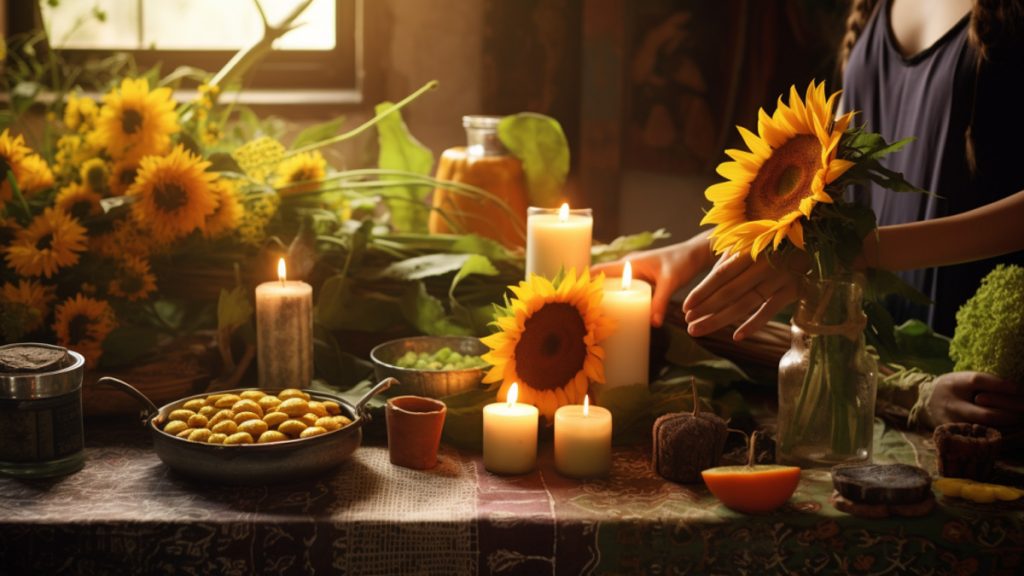
How to Celebrate Litha
Here are some ideas on how to honor Litha, in the Wheel of the Year holidays.
1. Embrace nature: Take advantage of the longer daylight hours by spending time outdoors in nature. Go for a hike, have a picnic in the park, or simply sit under a tree and soak up the sun’s rays.
2. Light a bonfire: Fire has long been associated with Litha celebrations. Build a bonfire and gather around it with friends and family. You can sing songs, tell stories, or simply enjoy each other’s company while basking in its warm glow.
3. Make flower crowns: As summer is in full bloom during Litha, why not embrace its beauty by making flower crowns? Gather flowers from your garden or nearby fields and create beautiful headpieces that symbolize fertility and vitality. You could even make a celebratory wreath with flowers, greenery, or whatever you have on hand in the nature that surrounds you.
4. Have a solstice feast: Celebrate the abundance of summer by hosting a festive meal with seasonal fruits and vegetables. Incorporate traditional foods such as strawberries, cherries, honey cakes, or mead into your menu.
5. Practice gratitude rituals: Take time to reflect on all that you are grateful for during this season of growth and warmth. Write down your blessings on small pieces of paper and offer them to the fire as an act of thanks.
6. Plan outdoor activities: Organize activities like outdoor games or sports tournaments to make use of the extended daylight hours while enjoying quality time with loved ones.
All About Lughnasadh
Lughnasadh, also known as Lammas, is a significant pagan holiday that marks the beginning of the harvest season. It falls on August 1st or 2nd in the Northern Hemisphere and February 1st or 2nd in the Southern Hemisphere. This ancient festival is named after the Celtic god Lugh, who was associated with skills and craftsmanship.
During Lughnasadh, people come together to celebrate abundance and give thanks for the bountiful gifts of nature. It’s a time to honor the grain harvest and show gratitude for the nourishment it provides. Many traditional activities involve making bread from freshly harvested grains as a symbol of sustenance and prosperity.
In addition to feasting on seasonal foods, Lughnasadh celebrations often include outdoor games, music, dancing, storytelling, and crafts. People gather in community gardens or natural settings to connect with nature’s cycles and foster a sense of unity.
This joyful occasion reminds us of our deep connection to the Earth’s fertility and our ability to create through hard work. We acknowledge our role as co-creators in this abundant world by celebrating Lughnasadh.
Let us embrace this opportunity to appreciate nature’s generosity while recognizing our responsibility to care for it. Whether you participate in traditional rituals or create your own unique way of honoring this special time, may your Lughnasadh be filled with joy, gratitude, and meaningful connections with humanity and Mother Earth.
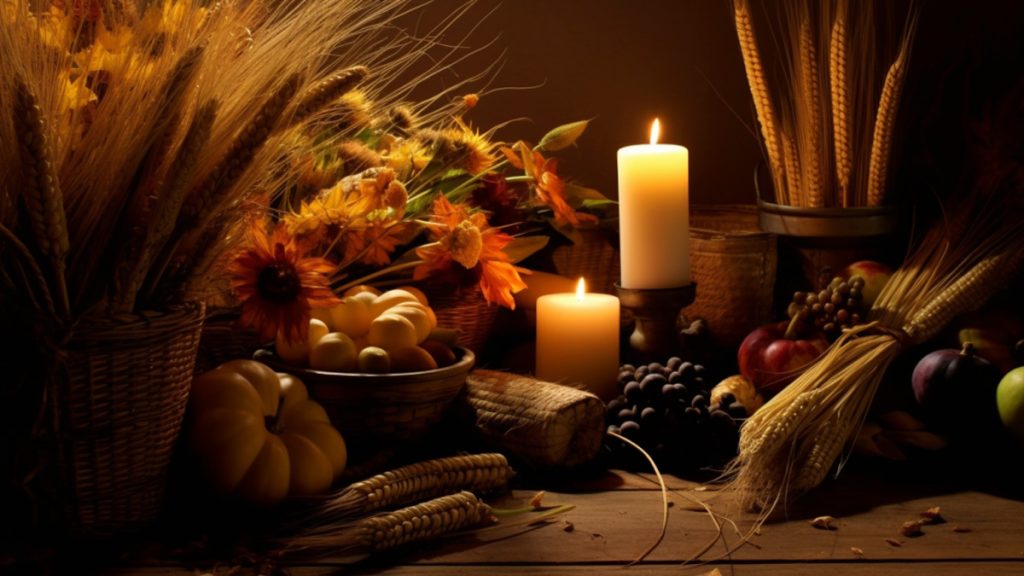
Tips on How to Celebrate Lughnasadh
1. Connect with nature: Lughnasadh is a celebration of the first harvest, so what better way to honor this time than by spending time in nature? Take a walk in the woods, visit a local farm, or start your own garden. Embrace the beauty and abundance of the earth.
2. Gather with loved ones: Traditionally, Lughnasadh was a time for communities to come together and celebrate. Invite friends and family over for a potluck meal or organize an outdoor picnic. Share stories, laughter, and good food as you create new memories.
3. Create an altar: Set up a special space dedicated to Lughnasadh in your home or garden. Decorate it with items that represent abundance, such as fresh fruits, grains, flowers, and candles. Use this space for meditation or reflection on gratitude for the harvest.
4. Bake bread: Bread-making is often associated with Lughnasadh as it represents the harvest of grains. Try your hand at baking homemade bread using traditional recipes or experimenting with different flavors and ingredients.
5. Perform rituals: Incorporate rituals into your celebration to honorably acknowledge the changing seasons and give thanks for the abundance in your life. Light candles representing fire elements or perform a ritualistic dance outdoors under the sun.
6. Enjoy music and dancing: Lively music has always been integral to celebrations during Wheel of The Year holidays. You can also try shamanic drumming or joining a drumming circle to celebrate Lughnasadh.
About Mabon
Mabon, also known as the Autumn Equinox, is a time of balance. It denotes the transition from summer to fall, when day and night are equal in length, around September 20-23rd. This celebration takes its name from the Welsh deity Mabon ap Modron, who symbolizes youthful energy and abundance.
During Mabon, we honor the harvest season and give thanks for all that nature has provided us. It’s a time to gather with loved ones and express gratitude for the abundance in our lives. Many people celebrate by creating beautiful altars adorned with autumnal fruits, vegetables, and flowers.
One popular tradition during this festive time is making cornucopias – symbolic horns of plenty filled with seasonal produce. These can be displayed on your dining table or given as gifts to friends and family.
Another way to celebrate Mabon is by enjoying nature’s bountiful beauty through apple picking or peaceful walks in colorful forests. Take some time to connect with Mother Earth and appreciate her ever-changing cycles.
In addition to feasting on delicious autumn foods like pumpkin pie or roasted root vegetables, you can also take part in rituals that reflect introspection and letting go of what no longer serves you. Reflect on what you have accomplished throughout the year so far while setting intentions for the months ahead.
As we embrace this transitional period between lightness and darkness, let us remember that life itself is a cycle of birth, growth, death, and rebirth – just as the seasons change without fail each year.
So take a moment during Mabon to pause amidst life’s busyness – breathe in deeply – feel grounded within yourself – acknowledge your connection to nature – find solace in simplicity – embrace gratitude for all that surrounds you – honor both lightness & darkness within yourself & others!
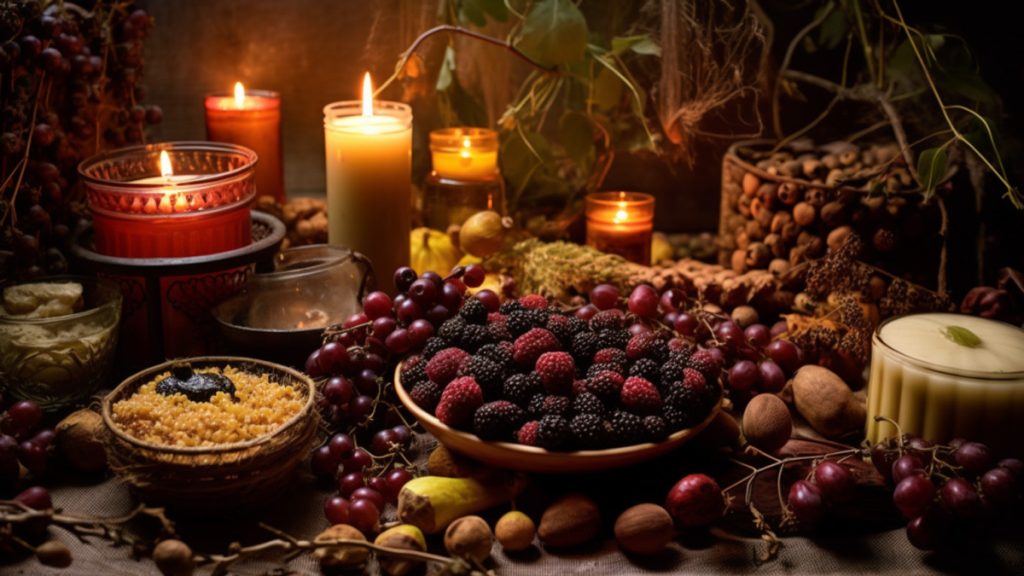
Ways to Celebrate Mabon
Here are some unique ways to celebrate this special pre-industrial Wheel of the Year holidays.
1. Harvest Feast: Gather your loved ones for a bountiful meal using seasonal ingredients like apples, pumpkins, and root vegetables. Share stories of gratitude for the abundance in your life.
2. Nature Walks: Take a leisurely stroll through nature and immerse yourself in the vibrant colors of autumn. Collect fallen leaves or acorns to use in crafts or decorations later on.
3. Bonfire Ritual: Light a bonfire at dusk and invite others to join you in reflecting on the changing seasons. Offer thanks for what has been harvested both physically and metaphorically throughout the year.
4. Craft Time: Get creative with DIY projects that embrace the essence of Mabon. Create wreaths made from dried flowers or make corn husk dolls symbolizing fertility and protection.
5. Gratitude Altar: Set up an altar dedicated to expressing gratitude during Mabon. Decorate it with symbols such as autumn leaves, small gourds, crystals associated with abundance, and candles representing warmth and light.
Why Practice the Old Ways and Celebrate the Wheel of the Year?
There is a certain magic in honoring ancient traditions and connecting with nature’s cycles. Practicing the old ways and celebrating the seasons and the Wheel of the Year holidays allows us to tap into a deeper connection with ourselves, our ancestors, and the natural world around us.
By embracing these pre-industrial holidays, we are reminded that we are part of something much greater than ourselves. We become attuned to life’s ebb and flow, acknowledging its beauty and challenges. It grounds us in a sense of timelessness that can be easily forgotten in our modern, fast-paced lives.
Furthermore, observing these celebrations provides an opportunity for self-reflection and personal growth. Each holiday holds its own unique meaning and symbolism, inviting us to delve into different aspects of our spirituality or connect with specific energies associated with that season.
Embracing pagan festivities also helps foster a sense of community. These gatherings bring like-minded individuals together to honor shared beliefs while fostering connections based on mutual respect and celebration.
Moreover, by practicing these ancient traditions, we contribute to keeping them alive for future generations. As society continues to advance technologically, it becomes increasingly important not to lose touch with our roots – those timeless practices that have shaped human existence for centuries.
Practicing the old ways and celebrating seasonal holidays offers an opportunity for deep spiritual connection amidst today’s modern chaos. It reminds us to slow down, appreciate nature’s rhythms, seek inner wisdom, celebrate community bonds, and preserve ancestral knowledge.
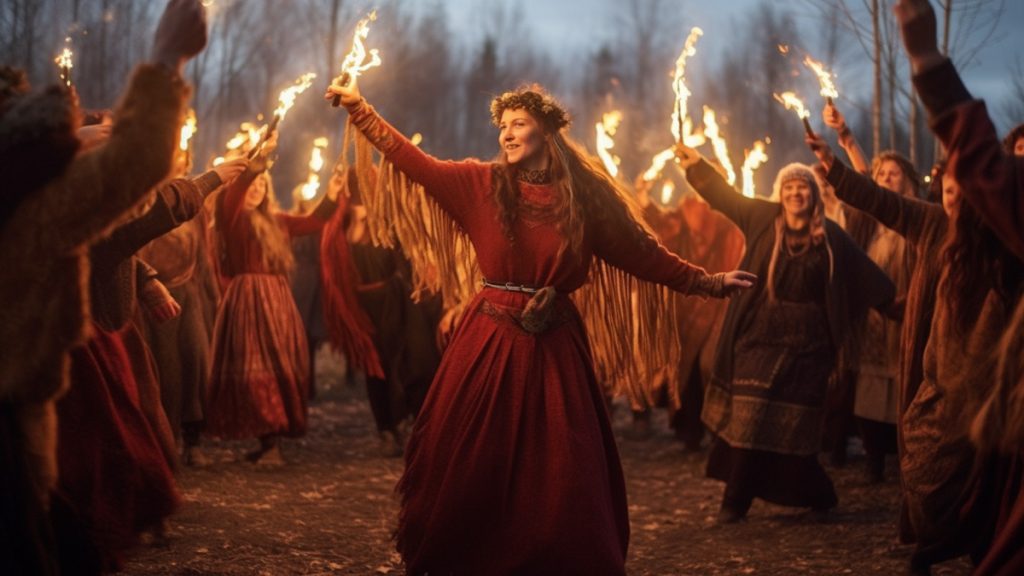
Frequently Asked Questions About Holidays in the Wheel of the Year
I hope I covered most of the highlights about Wheel of the Year holidays, but here are some Qs and As to elaborate.
The Wheel of the Year refers to a calendar system that celebrates eight seasonal holidays or Sabbats throughout the year. These holidays mark significant points in nature’s cycle, honoring and connecting with the changing seasons.
While these celebrations have roots in Paganism and are commonly observed by Pagans and Wiccans, they can be appreciated by anyone who values nature’s rhythms and wishes to connect with them on a deeper level.
No, you don’t have to adhere to any particular religious beliefs. The Wheel of the Year offers a chance for people from all walks of life to embrace nature, honor its cycles, and find joy in celebrating each season’s unique energy.
ou can personalize your observance of each holiday by blending traditional customs with contemporary activities that resonate with you. For example, during Samhain (pronounced SOW-in), you might carve pumpkins as jack-o’-lanterns while also remembering beloved folks who have passed away.
Not at all! While some individuals enjoy intricate rituals as part of their celebration, others prefer simpler expressions like spending time outdoors, creating art inspired by nature, or sharing a meal made from locally sourced ingredients.
Both options are valid! Some people find solace and connection through solitary observances where they can reflect privately on their relationship with nature. Others prefer joining community gatherings or participating in virtual events where they can share experiences and learn from others.
Remember that there are no set rules for how one must celebrate these holidays. The most important aspect is to engage in activities that bring you joy,
Conclusion About Pre-Industrial (Pagan) Wheel of the Year Holidays
In a world that often feels disconnected from nature and the rhythms of the earth, embracing the old ways and celebrating the seasons of the Wheel of the Year can bring us back to our roots. These pre-industrial Wheel of the Year holidays hold deep meaning and significance, reminding us to honor and connect with the natural world around us.
By celebrating these ancient festivals today, we honor our ancestors and cultivate a deeper sense of mindfulness and presence in our lives. Whether it is through creating altars adorned with seasonal symbols or participating in community gatherings that celebrate these traditions together, there are countless ways to make these holidays meaningful in your modern life.
So take a moment to pause amidst the hustle and bustle of daily life. Embrace the changing seasons as opportunities for growth and reflection. Connect with nature through rituals or simple acts like planting seeds or taking mindful walks outdoors. Find joy in gathering loved ones around bonfires or feasting on local seasonal foods.
Remember that you don’t have to identify as ‘pagan’ or follow any specific belief system to appreciate these ancient celebrations. The Wheel of the Year invites everyone who seeks connection with nature and a deeper understanding of their place within it.
As we navigate this fast-paced modern world filled with technological advances, let us not forget to honor our pasts while looking towards an abundant future rooted in harmony with Mother Earth. So go ahead – embrace these timeless traditions; celebrate all moments big or small along this ever-turning wheel!
Wishing you a vibrant and fulfilling journey as you explore the magic of the Wheel of the Year holidays! As always, thanks for reading!
Mighty brightly,

© Copyrighted. All Rights Reserved.
Want more? Me too! That’s why I’ve also got this for you on Whats-Your-Sign:

